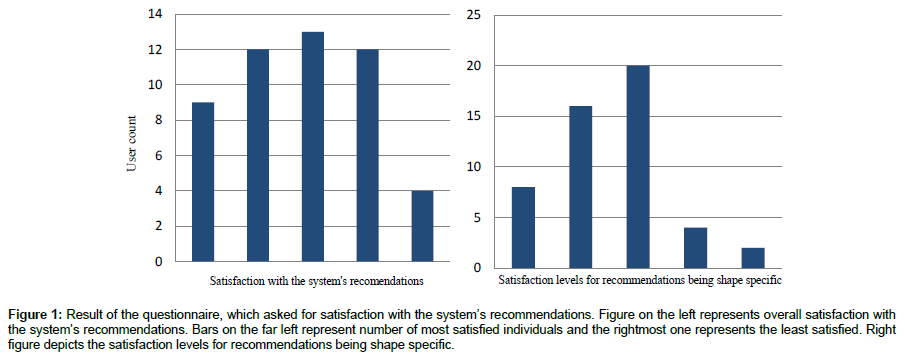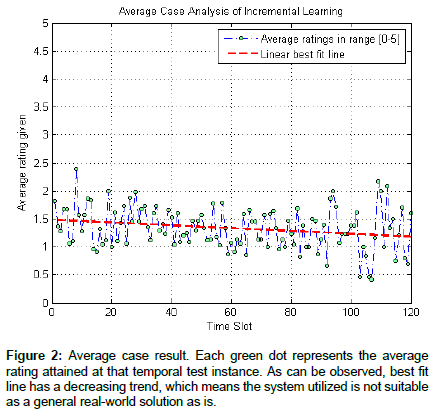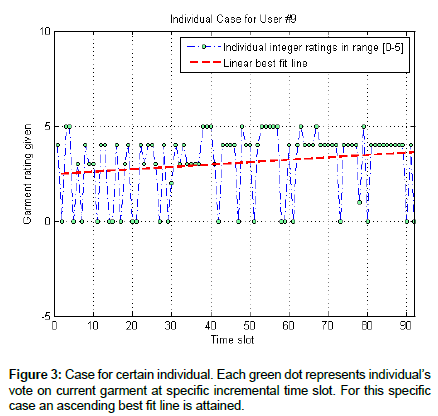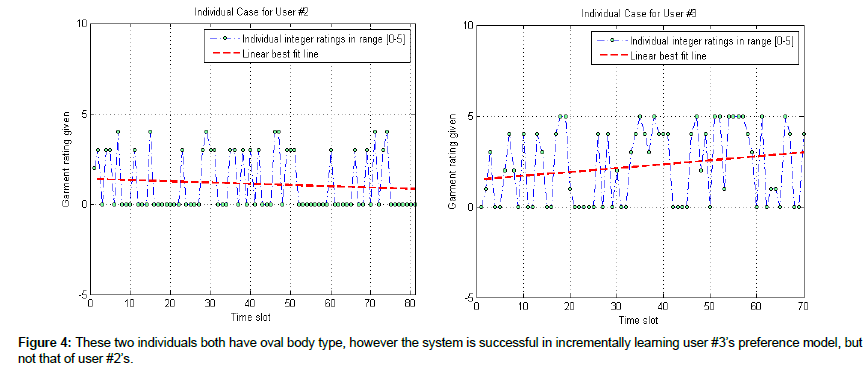Research Article, J Fashion Technol Textile Eng S Vol: 0 Issue: 4
Fashion Styling Recommendation with Intelligent Systems: Test of an Online Platform
Vuruskan A1*, Bulgun E1, Ince T2, Guzelis C3, Demirkiran G3 and Oktar Y4
1Izmir University of Economics, Faculty of Fine Arts and Design, Department of Fashion and Textile Design, Balcova, Izmir, Turkey
2Izmir University of Economics, Faculty of Engineering and Computer Sciences, Department of Electrical and Electronics Engineering, Balcova, Izmir, Turkey
3Yasar University, Faculty of Engineering, Department of Electrical and Electronics Engineering, Bornova, Izmir, Turkey
4Izmir University of Economics, Faculty of Engineering and Computer Sciences, Department of Computer Engineering, Balcova, Izmir, Turkey
*Corresponding Author : Arzu Vuruskan
Izmir University of Economics, Faculty of Fine Arts and Design, Department of Fashion and Textile Design, Balcova, Izmir, Turkey
Tel: 90 2324885389
E-mail: arzu.vuruskan@ieu.edu.tr
Received: December 04, 2017 Accepted: February 20, 2018 Published: February 26, 2018
Citation: Vuruskan A, Bulgun E, Ince T, Guzelis C, Demirkiran G, et al. (2018) Fashion Styling Recommendation with Intelligent Systems: Test of an Online Platform. J Fashion Technol Textile Eng S4:005. doi:10.4172/2329-9568.S4-005
Abstract
Integration of intelligent systems in fashion and design related field is a relatively new concept. The aim of this research was to evaluate the performance of an intelligent fashion styling recommendation system for non-standard female body shapes. As a recommender strategy, the intelligent fashion styling system employs a twostage genetic search, which recommends users fashion styles based on experts’ suggestions and user’s preferences through the system. The proposed intelligent system was tested through a web-based platform using both synthetic and real participants. In cases of synthetic participants results were promising. However, in real participant cases, results were unsatisfactory in average due to certain complications in the testing process and variety in characteristics of participants. Note that, even the average result was unsatisfactory, certain participants indicated their positive remarks for the recommendations provided by intelligent fashion styling platform to identify their expectations.
Keywords: Fashion design; Styling recommendation; Female body shapes; Genetic algorithm; Incremental learning
Introduction
Fashion styling recommendation systems have become an inevitable part within online retail platforms with the increasing trend of personalisation. Most online retail platforms, including apparel e-markets, offer personalised styling recommendations, which are mostly based on the history and categorization of the data provided by customers. Such platforms do not provide real interactive facilities for user feedback, whereas an elevated interaction with a companion intelligent learning background could be a major contribution for personalisation models.
Integration of intelligent systems in fashion and design related fields is a relatively new concept. Guo, et al. [1] identified four main areas of research in artificial intelligence applications in the apparel industry: design, manufacturing, retailing and supply chain management. Guan, et al. [2] investigated high-tech integrated apparel systems into 3D CAD systems, personalised design systems and recommendation systems.
The aim of this research was to evaluate the performance of an intelligent fashion styling recommendation system for non-standard female body shapes, developed and improved by the same research group referenced in Vuruskan et al. [3]. The system tested in this research suggests a solution for automatic fashion styling based on the selection of a combination of top and bottom garments that optimizes appearance for a selected female body shape.
Methods
The intelligent fashion styling recommendation system, to be tested in this research is designed to generate fit recommendations based on experts’ suggestion and by incorporating the user’s taste. For such recommendations, the system employs two-stage genetic search. The first stage ensures the generation of expert-approved styles to be recommended to the users, whilst the second stage incrementally learns the user’s taste in expert-approved space. Due to the sequential implementation of the stages, the user is only allowed to evaluate the styles that the expert approves in the first stage. In the second stage, the evaluations of the user are embedded into the fitness values of the chromosomes that represent the styles, so that in the next iterations, the styles that the user is likely to prefer can be generated.
Both synthetic usage and real world testing have been performed on the system proposed. 80 stereotype users were created representing different body shapes for synthetic usage. The system was also tested through a web-based platform for real world testing. 50 female students and academic personnel from two departments in a college participated in this research. Participants were asked to log in the system anonymously and introduced their body shapes by using alternative methods offered in the algorithm. After the first set of style recommendations by the system, participants could interact with the system by selecting their favourite style combinations.
Results
Results for synthetic users
Users provide real feedback input to the intelligent system. Incremental learning capability of the designed intelligent system can then be utilized to learn from user’s design preferences. Both synthetic usage and real world testing have been performed on the system proposed. For the synthetic case, first 20 stereotype synthetic user models from each body type category are created. These stereotype users prefer certain characteristics, details, or styles. Table 1 shows the preliminary results for the performance of the intelligent system tested via synthetic user models. The average number of liked garments in each session increases as can be shown in Table 1. Thus, the designed intelligent system is effective in recognizing the synthetic users’ taste.
| Sessions | ||||||||||
|---|---|---|---|---|---|---|---|---|---|---|
| 1 | 2 | 3 | 4 | 5 | 6 | 7 | 8 | 9 | 10 | |
| H | 7.0 | 9.2 | 10.6 | 11.8 | 12.8 | 13.6 | 14.2 | 14.5 | 15.1 | 15.5 |
| O | 2.4 | 4.1 | 4.7 | 5.8 | 6.5 | 6.8 | 7.3 | 7.9 | 8.4 | 8.6 |
| V | 7.0 | 9.9 | 11.3 | 12.5 | 13.4 | 14.3 | 14.9 | 15.6 | 16.1 | 16.2 |
| A | 4.0 | 6.6 | 8.3 | 9.9 | 11.4 | 12.7 | 13.5 | 14.2 | 14.9 | 15.3 |
Table 1: Average number of liked garments over 20 recommended styles by 20 stereotype users from each body type category.
Perceptual results for real users
The latter phase of system was testing with real participants. It shows that the interaction helps to improve the performance of the intelligent system and supports for incremental learning. Participants indicated their positive remarks for the recommendations provided by intelligent fashion styling platform, which can be observed in Figure 1 that summarizes a questionnaire that was filled at the end of testing phase.
Figure 1: Result of the questionnaire, which asked for satisfaction with the system’s recommendations. Figure on the left represents overall satisfaction with the system’s recommendations. Bars on the far left represent number of most satisfied individuals and the rightmost one represents the least satisfied. Right figure depicts the satisfaction levels for recommendations being shape specific.
Quantitative results for real users
The system has been tested with 50 women participants, with varying ages and occupation, where they voted combinations that were presented to them through a web interface, and each vote has been registered with a timestamp. Although satisfactory results have been achieved in case of synthetic testing, and perceptual results in the case of real users are promising, quantitative analysis has shown that method is not yet suitable as a general solution as is and it worked only for certain individuals. There are many possible reasons for such failure which will be discussed. Figure 2 shows the average case result, Figure 3 shows the case for a certain individual.
Real world participants have their own complex characteristic models. Therefore, in real world case, body shape and preference model does not have one to one correspondence. In other words, a generic synthetic participant with a specific body type directly corresponds to a preference model. On the other hand, real participants have a lot of variety such as age, occupation, or in general many other variables and their combinations, thus cannot be stereotyped. Factors that determine preference models are not only physical but can even be abstract such as mood, which can even change temporarily. Among all variables such as age, mood, occupation, etc.., body shape is targeted as a reference point in this study. It is supposedly a significant factor determining the preference model. However, all other characteristics such as age, mood, occupation, and anything that can be thought of are not observed or targeted.
Targeting body shape variable surely decreases the complexity of learning process. But still, even though the body shapes of two participants are same, it does not mean that they have the same preference model. This phenomenon is depicted in Figure 4. Both graphs refer to individuals with same body shape, but it is observable that the system worked for one (User #3) but not for the other (User #2).
It is important to note that while users voted the garments in a scale of 0 to 5, (0 meaning dislike and 5 meaning the best), the system only registered the ratings as binary, namely the learning process depends on binary labelling. Binary dependent incremental learning might be problematic in general as it targets the hyperplane that separates the likeness and distaste space. Binary feedback may not be very supportive of fitness evaluation needed for the system that is proposed. On the other hand, a scaled feedback will be more beneficial for an incremental learning process that utilizes a genetic search, because genetic approaches are directed through fitness function and functions that have continuous ranges (corresponding to a possible fitness value within [0-5]) are more expressive than binary ones.
Conclusions
In this research, a fashion styling recommendation platform developed with the integration of intelligent systems was tested. A valuable contribution in this research was to include user feedback for the design process. By including the users to the system and to the design process, design recommendations from the system were improved with the user expectations and an interactive platform was created. Results with the synthetic users were satisfactory; however testing of the web-based platform with real participants showed that system needs further testing and development. It is challenging to include intelligent systems to the fashion design process, where user’s taste constitutes the main decision criteria and is dependent on many personal factors.
It was suggested that an intelligent system with incremental learning capability could work for online fashion styling recommendation based on nonstandard body shapes. With further improvement of such systems, styling recommendations could be extended with various other user inputs or criteria including individual taste.
Acknowledgements
This research is realized within the context of project numbered 214M389 with the support of TUBITAK (The Scientific and Technological Research Council of Turkey).
Authors would like to thank Research Assistants Beste Bayindir and Idil Ozusta for their support in fashion drawings and website design.
References
- Guo Z, Wong W, Leung S, Li M (2011) Applications of artificial intelligence in the apparel industry: a review. Text Res J 81: 1871-1892.
- Guan C, Qin S, Ling W, Ding G (2016) Apparel recommendation system evolution: An empirical review. Int J Cloth Sci Tech28: 854- 879.
- Vuruskan A, Ince T, Bulgun E, Guzelis C (2015) Intelligent fashion styling using genetic search and neural classification. Int J Cloth Sci Tech27: 283-301.
 Spanish
Spanish  Chinese
Chinese  Russian
Russian  German
German  French
French  Japanese
Japanese  Portuguese
Portuguese  Hindi
Hindi 






